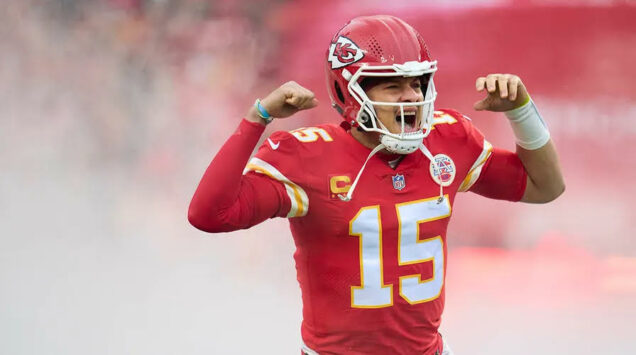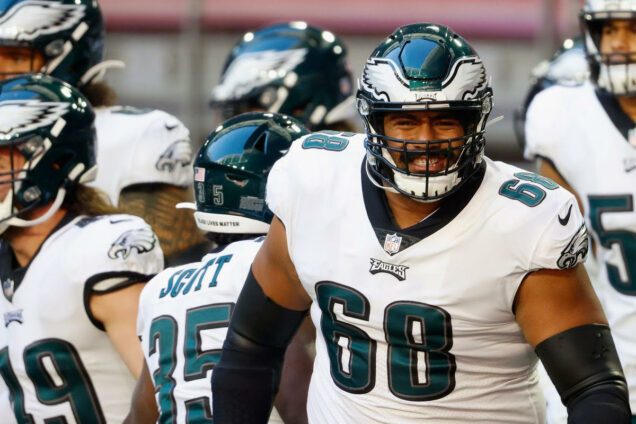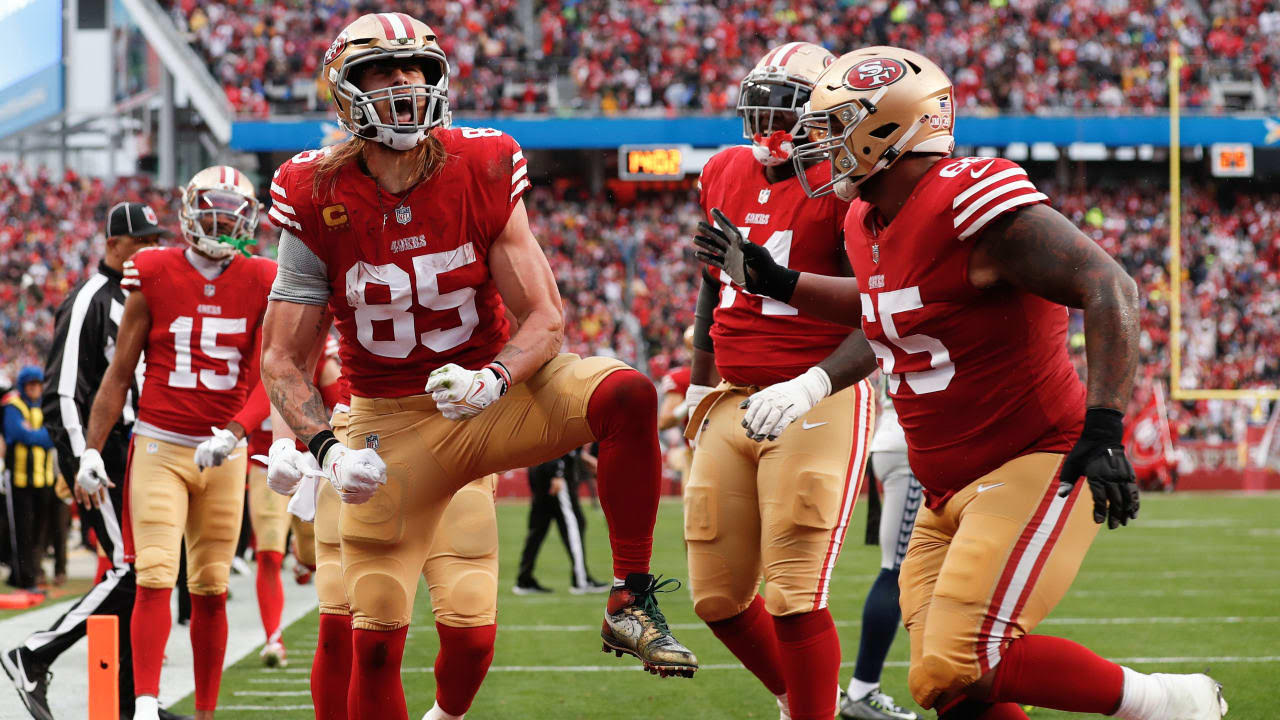The B-Gap: The NFL’s final four is its best four
By Sam Robb O’Hagan
It was always these four.
In 2022, the NFL’s final four is its best four. In a season that was largely starved of quality football from quality teams — look no further than those Minnesota Vikings winning 13 games — the Kansas City Chiefs, Philadelphia Eagles, Cincinnati Bengals and San Francisco 49ers were always a cut above the rest. These were always the best four, now they are the final four.
But the football being played in Kansas City, Philadelphia, Cincinnati and San Francisco — despite all reaching the same rung of the NFL ladder — couldn’t be more different. The 2022 slate of Conference Championship games holds so much gravity not because it puts the best against the best, but because it puts the four most dominant football-winning philosophies of this era against each other.
Think about why each of the four is here. The Chiefs’ equation starts and ends with quarterback Patrick Mahomes, who is lapping the rest of the field in the race to be the best at the game’s most fabled position.
The Bengals are here because of their flexibility, embodying the age-old cliche of mid-game adjustments while maximizing the relatively narrow skillsets of their role-players.
The Eagles dominate the trenches, their offensive and defensive lines could both be the best in the league, the engines that make the league’s winningest team go.
The 49ers have an impossibly talented group of skill-position players, the most convicted endorsement yet of the newest roster-building renaissance in the NFL and a perfect nest for a quarterback, no matter which shape or size, to thrive.
This is it. One of the four pillars of NFL roster-building will defeat the other three. It’s quarterbacking versus adaptivity, versus trench-play, versus skill-position superiority.
These are the four biggest talking points in the discourse of the football-viewing public. Quarterback play has been debated over, and over, and over again for as long as any of us can remember. Offensive and defensive line play has been the counter to quarterbacking’s perceived necessity every step of the way. Flexibility and role-player contribution — which tends to have a one-to-one relationship with quality coaching — has been the bones of the “process over results” perspective since the dawn of time. And then there’s those ‘sexy’ receivers, finally being granted the spotlight as the sport moves further and further away from its ‘smashmouth’ origins.
No matter what happens, we’re going to get answers and we’re going to get proof, good or bad, of each of these four concepts.

But the eventual result of this ultimate NFL ending won’t just be content for the media narrative machine to chew on. The NFL is a copycat league (a cliche in itself); each front office has their own ideas on how to build their rosters, how to prioritize each of those four pillars, and accordingly, each war-room is closely monitoring the activity of the other 31 and the success of their own philosophies.
It is because of that eternal league-wide surveillance that each new idea is only a few seasons away from becoming a revolution. In 2017, the Los Angeles Rams did the unthinkable, hiring supposed offensive-guru Sean McVay — at just 30 years old — as their head coach. Three seasons, three top 10 offenses, and 33 wins later, the NFL had hired five more head coaches, with experience almost exclusively on offense, who were in their 30s. Today, more than half of the 27 head coaching positions currently filled are held by offensive coaches.
At the sight of one — just one — overnight success led by a brand-new idea, the entire NFL was immediately lining up to replicate it.
With that in mind, how will the NFL respond if the 49ers pull off the unthinkable themselves — winning the Super Bowl starting a rookie quarterback who was the last pick in the draft because their skill-position players are that dominant?
Does the already chaotic scramble to stack the cupboards with receiving talent descend into complete pandemonium? Do wide receivers that would’ve been second and third-round picks in past years get suddenly thrusted into the first-round? Does the running back position, in the midst of a market free-fall, begin to regain its value and demand across the league following the overwhelming success of the Christian McCaffrey trade?
And how would the NFL even begin to grapple with Brock Purdy winning it all, beating out elite passers like Mahomes, Joe Burrow and Jalen Hurts, while dragging the “Mr. Irrelevant” tag behind him?
In a copycat league that is rattled ever-so-easily, this version of the 49ers standing above the rest could produce an unprecedented panic across the NFL landscape.
The 49ers and Purdy are, of course, the most extreme remaining possibility, but the other three each win in their own unique ways.
The Bengals are especially interesting, specifically on defense, where they aren’t paying a single player over $15 million per year and are rostering just one that they spent a first-round pick on (it’s Dax Hill, who hasn’t started a game this season).
Despite an unprecedented lack of defensive starpower, Cincinnati’s defense still finished the season 11th in overall defensive DVOA and seventh in success rate. Those numbers speak to this coaching staff’s ability to match narrowly-skilled players to specific roles designed for them to excel. And these numbers — which average out to a negative Expected Points Added per play among elite quarterbacks that have faced the Bengals in the last two seasons — illustrate defensive coordinator Lou Anarumo’s ability to adjust and adapt to a variety of different offenses and passers.
If the Bengals make it back to the Super Bowl, and then win it, how will the NFL approach defensive spending going forward? Will the league be moved enough by the Bengals’ uniquely successful formula to pivot from paying a few star-defenders to assembling a consistent unit made up of solid contributors across the board? How much will the league value head coach candidates like Anarumo — who are so good at changing their stripes and getting the most out of their players — over ones with flashy offensive ideas?
And then there’s Philadelphia — who simply line-up and play like few other teams in the league, with no time for complicated schemes or chameleon-like adaptivity. The Eagles just do what they do, running basic schematic concepts week after week on their way to a 14-3 record. All of it is made possible because they really are that overwhelmingly good in the trenches, with three All-Pros across both offensive and defensive lines.
The Chiefs are unique themselves, too, having traded away their superstar wide receiver and sacrificing their explosive passing-game while doing it. That revised offensive approach, which goes directly against the overall offensive trend of the league, actually made them better. In 2021, the Chiefs’ offense was second in EPA/play at 0.140 and in 2022 they were first at 0.179.
All of that is made possible by Mahomes, who is such a ludicrously good quarterback that it isn’t out of the realm of reason to declare him one of the greatest players ever in the middle of a career that probably isn’t even halfway done yet.
If the Eagles, with their dominant trench play, or the Chiefs, with their once-in-a-lifetime quarterback, end up atop the NFL ladder, you can bet the NFL will be ready to respond accordingly, too.

Back before Week 5, Tom Brady was asked for his thoughts on the parity throughout the season’s first four weeks.
“I’ve watched a lot of bad football,” he responded. “A poor quality of football is what I see.”
Brady was right — even if his Tampa Bay Buccaneers were very much part of the problem. But three months later, there will be bad football no more. These four — the Chiefs, Eagles, Bengals, and 49ers — are the best four, a rare viewing privilege in a sport that can vary like few others.
But how these four got here, each in their own uniquely impressive ways, is what makes the imminent battles between this group so exciting. They’re all so good, but they’re all exclusively themselves, with distinct identities that have carried them to this point.
Forgive the NFL superfan in me, but that’s so damn cool.
